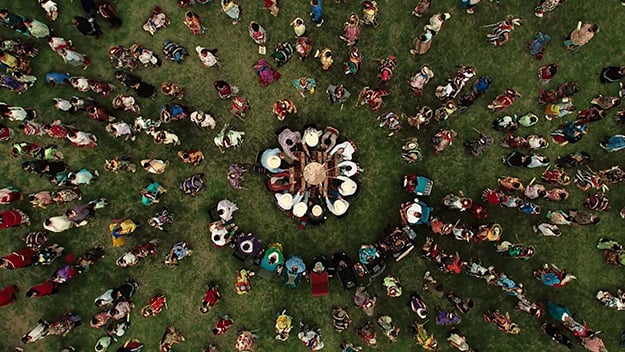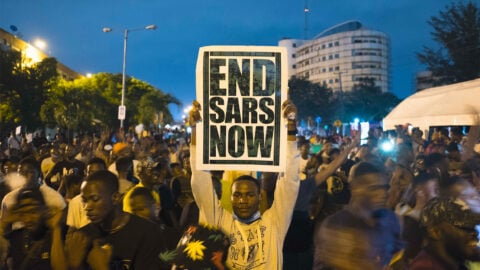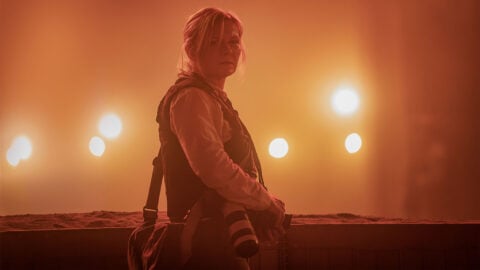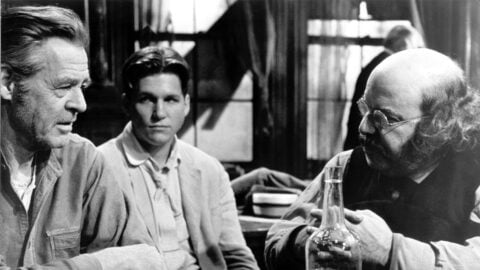An Image for 2024: A Field Recording in Killers of the Flower Moon
This article appeared in the January 5, 2024 edition of The Film Comment Letter, our free weekly newsletter featuring original film criticism and writing. Sign up for the Letter here.

Killers of the Flower Moon (Martin Scorsese, 2023)
When I think through all the movies that I watched in the past year, it’s not an image, per se, that jumps out at me, but rather a cessation of images. As the credits roll on Martin Scorsese’s epic Killers of the Flower Moon, and the chanting of Osage dancers—seen whirling in circles in the film’s final, hawk’s-eye-view shot—fades out, we’re left with what sounded to me like a field recording of a prairie in the evening: crickets trilling, birds chirping, and above all, wind rushing through tall grasses. After the film’s orchestral flood of images, ideas, historical investigations, and full-bore acting, this withdrawal into contemplative and ambient sound ruptures any possibility of narrative closure.
In his book PrairyErth: (a Deep Map), a strange blend of memoir, geographical study, and natural history, William Least Heat-Moon describes the Kansas prairie: “The protection and sureties of the vertical woodland, walled like a home and enclosed like a refuge, are gone, and now the land, although more filled with cellulose than ever, is a world of air, space, apparent emptiness, near nothingness, where once the first travelers could walk for twelve hours and believe they had taken only a dozen steps.” In its final moments, all the sureties of Scorsese’s movie—its star power, cinematic contrivances, and fine-grained historical recreations—give way to a blissful near-nothingness. This experience—of the gentle dissipation of narrative, and the inevitable jolt back into the rushing stream of history—is one thing I’ll carry with me into the new year.







